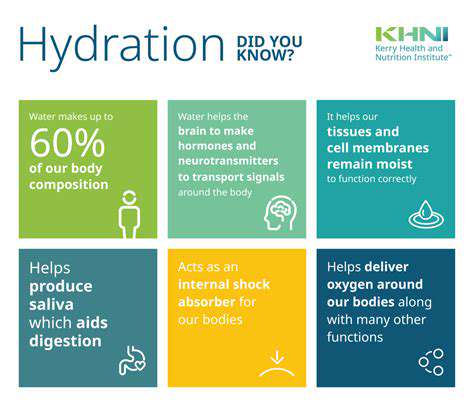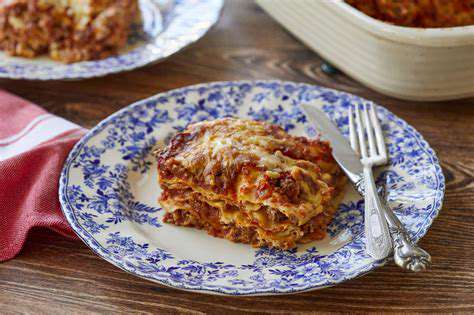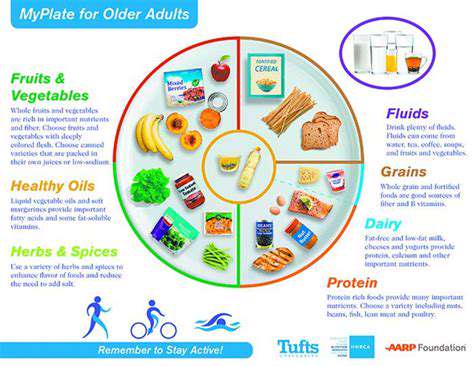Healthy Meal Plan for Weight Loss [7 Day Guide]
Setting Realistic Expectations and Goals
Embarking on a weight loss journey requires a strong foundation of realistic expectations and well-defined goals. It's crucial to understand that sustainable weight loss isn't about drastic overnight transformations, but rather consistent, manageable changes. Focusing on gradual progress, rather than quick fixes, will ensure long-term success and prevent feelings of frustration or disappointment. Setting achievable milestones, such as losing one to two pounds per week, is key to maintaining motivation and preventing burnout. Remember, your body is unique, and your journey will be tailored to your specific needs and circumstances. Don't compare your progress to others, as everyone's journey is different and should be celebrated individually.
Defining specific, measurable, achievable, relevant, and time-bound (SMART) goals is essential for tracking your progress effectively. For example, instead of a vague goal like lose weight, a SMART goal might be lose 1-2 pounds per week for the next month by incorporating 30 minutes of moderate-intensity exercise and consuming 1200-1500 calories per day from a balanced diet. Be sure to consult with a healthcare professional or registered dietitian to create a personalized plan that aligns with your health status and specific needs. This personalized approach ensures that the goals are not only achievable but also conducive to long-term well-being.
Understanding the Fundamentals of a Healthy Diet
A healthy diet is the cornerstone of any successful weight loss journey. It's not about deprivation, but rather about making conscious choices that nourish your body and support your goals. Understanding the importance of portion control, choosing nutrient-dense foods, and limiting processed foods and sugary drinks is vital. Focusing on whole, unprocessed foods like fruits, vegetables, lean proteins, and whole grains provides essential vitamins, minerals, and fiber, promoting satiety and overall health.
Prioritizing a balanced intake of macronutrients—proteins, carbohydrates, and fats—is also key. Protein helps maintain muscle mass, which is crucial for metabolism. Complex carbohydrates provide sustained energy, and healthy fats are essential for various bodily functions. Understanding these components and how they work together allows you to make informed choices that support both weight loss and overall well-being. Learning to read food labels and understand serving sizes is an important skill to develop, enabling you to make conscious and informed decisions about the foods you consume.
Paying attention to hydration is another critical aspect of a healthy diet. Water plays a vital role in numerous bodily functions, including digestion and metabolism. Staying properly hydrated helps you feel full, reducing cravings and promoting overall well-being. Consuming plenty of water throughout the day can significantly contribute to your weight loss journey, and it's a simple yet effective habit to adopt.
Limit your intake of processed foods and sugary drinks. These often contain high levels of added sugars, unhealthy fats, and empty calories. Shifting focus towards whole, unprocessed foods will not only support your weight loss goals but also contribute to improved overall health and well-being.
By carefully choosing foods and understanding their impact on your body, you'll be well on your way to creating a sustainable and healthy relationship with food and achieving your weight loss goals.
Day 2-4: Maintaining Momentum and Variety

Building on Early Successes
Day 2-4 of your project provides a crucial opportunity to build upon the momentum established in the initial phase. It's a time to solidify the foundations and refine the strategies that are working well. This phase is about consistent action and measured progress. By maintaining focus and dedication, you can effectively translate early successes into tangible results.
The key is to analyze what's working and what needs adjustment. This iterative approach allows for continuous improvement and ensures that the project stays on track to meet its goals. By identifying and addressing any potential roadblocks early on, you can prevent them from derailing the entire project later.
Adapting to Evolving Needs
Projects rarely unfold exactly as planned. Circumstances change, and requirements may shift throughout the process. During this crucial period, it's essential to remain flexible and adaptable. This involves actively monitoring the project's progress, identifying any emerging issues, and making necessary adjustments to keep the project on track.
Adaptability is a critical skill in project management. It allows for a proactive response to unforeseen challenges and ensures that the project remains aligned with the overall goals and objectives.
Prioritizing Tasks and Managing Time
Effective time management is essential for maintaining momentum. Prioritizing tasks based on importance and urgency is a key aspect of this phase. By focusing on high-priority tasks first, you can ensure that critical milestones are met on schedule. This approach also helps to minimize stress and prevent feeling overwhelmed by the workload.
It's important to create a schedule that allows for flexibility and unexpected events. Effective time management is not just about completing tasks; it's about completing them efficiently and effectively. Planning for potential delays and allocating sufficient time for each task allows for a smoother workflow and reduces the risk of falling behind schedule.
Collaboration and Communication
Strong collaboration and communication are vital for maintaining a cohesive and productive team. Open communication channels foster a sense of shared responsibility and understanding. Regular check-ins, team meetings, and clear documentation help to keep everyone informed and aligned.
Transparent communication regarding progress, challenges, and solutions is crucial for maintaining a positive and productive work environment. This ensures that everyone is on the same page and working towards the common goal. Regular feedback and active listening are also key components of effective collaboration.
Overcoming Obstacles and Challenges
This phase inevitably presents obstacles and challenges. It's important to anticipate potential issues and have contingency plans in place. Developing problem-solving skills and the ability to adapt to unforeseen circumstances are crucial for navigating these difficulties effectively.
Addressing challenges head-on with a proactive approach is important to maintaining momentum. This proactive approach includes identifying potential roadblocks, developing alternative solutions, and implementing strategies to overcome these issues. Failure to address these issues can severely impact the project's overall success.
Refining Strategies and Processes
As the project progresses, it's important to review and refine the strategies and processes that have been implemented. This phase allows for a critical assessment of what's working well and what needs improvement. By evaluating the effectiveness of current strategies, you can identify areas for optimization and make necessary adjustments.
This continuous refinement process ensures that the project remains efficient and effective throughout its lifecycle. It also allows for the identification of best practices that can be applied to future projects and tasks. Regular process reviews help to improve workflow efficiency, reduce errors, and ensure maximum productivity.
Celebrating Milestones and Recognizing Achievements
Throughout this phase, it's critical to acknowledge and celebrate milestones and achievements. This fosters a positive and motivating environment. Recognizing individual and team contributions boosts morale and reinforces a culture of success.
Celebrating milestones can be as simple as a team lunch or a public acknowledgment of accomplishments. It's a crucial element of maintaining motivation and ensuring that the team remains engaged and dedicated to the project's success. Recognizing achievements helps to maintain momentum, reinforce positive behaviours, and foster a sense of accomplishment.
Day 5: A Focus on Fiber and Hydration

Fiber for Digestive Health
Fiber is an essential component of a healthy diet, playing a crucial role in promoting digestive health. It acts as a prebiotic, feeding the beneficial bacteria in your gut and supporting a healthy microbiome. A diet rich in fiber can contribute to regular bowel movements and prevent constipation. Including various fiber-rich foods like fruits, vegetables, and whole grains in your daily meals is a simple yet effective way to improve your digestive well-being.
Different types of fiber have distinct effects. Soluble fiber, found in oats, beans, and apples, can help lower cholesterol levels. Insoluble fiber, found in wheat bran and vegetables like broccoli, aids in promoting regularity and preventing digestive issues.
Hydration's Impact on Energy Levels
Staying properly hydrated is paramount for maintaining optimal energy levels throughout the day. Water is essential for numerous bodily functions, including transporting nutrients, regulating body temperature, and lubricating joints. Dehydration can lead to fatigue, headaches, and decreased cognitive function. Ensuring adequate water intake is crucial for peak performance in all aspects of life.
Drinking enough water is especially important during physical activity, as sweat loss can quickly deplete your body's water reserves. Carrying a reusable water bottle and making a conscious effort to sip water throughout the day can help you maintain optimal hydration levels.
Fiber's Role in Blood Sugar Control
Fiber plays a significant role in regulating blood sugar levels. By slowing down the absorption of sugar into the bloodstream, fiber helps prevent blood sugar spikes and crashes, contributing to better overall metabolic health. This is particularly beneficial for individuals with diabetes or those looking to manage their blood sugar levels effectively. Including fiber-rich foods in your diet can help stabilize blood sugar and prevent energy fluctuations.
Hydra and Skin Health
Adequate hydration is crucial for maintaining healthy skin. Water helps to keep your skin hydrated from the inside out, promoting a healthy glow and reducing the appearance of dryness and wrinkles. Staying well-hydrated can significantly improve the overall appearance and texture of your skin, contributing to a youthful and radiant complexion. Drinking plenty of water, coupled with a healthy diet, can contribute to healthy skin.
Fiber and Weight Management
Fiber's ability to promote satiety is a key factor in weight management. Feeling full for longer after meals can help prevent overeating and contribute to managing your weight effectively. Fiber-rich foods have a lower caloric density compared to processed foods, making them a beneficial choice for individuals looking to maintain or lose weight. By incorporating fiber-rich foods into your diet, you can support your weight management goals and overall health.
Read more about Healthy Meal Plan for Weight Loss [7 Day Guide]
Hot Recommendations
- Traditional Foods for Day of the Dead
- Food Etiquette in Italy: Pasta Rules!
- Best Family Friendly Restaurants with Play Areas in [City]
- Review: The Best [Specific Dessert] Place in [City]
- Top Ice Cream Parlors in [City]
- Traditional Foods for Halloween
- The History of the Potato in Ireland
- Best Vegan Pizza Joints in [City] [2025]
- Best Bakeries for Sourdough Bread in [City]
- Food Culture in Argentina: Asado and Wine


![First Baby Food Recipes [Purees & Introducing Solids]](/static/images/28/2025-04/SafetyConsiderationsforBabyFoodPreparation.jpg)


![Review: [Specific Wine Bar Name] with Food Pairing](/static/images/28/2025-05/FinalThoughts3AAMust-VisitforWineEnthusiastsandFoodies.jpg)

![Best Mexican Restaurants in [City]](/static/images/28/2025-05/FineDiningMeetsMexicanFlair3AAnElevatedCulinaryExperience.jpg)
![Best Vegetarian Restaurants in [City]](/static/images/28/2025-05/LocalFavoritesandHiddenGems.jpg)

![Review: [Specific type of cafe, e.g., Cat Cafe] in [City] A Fun Experience?](/static/images/28/2025-05/IsitWorththeVisit3FAFinalVerdict.jpg)